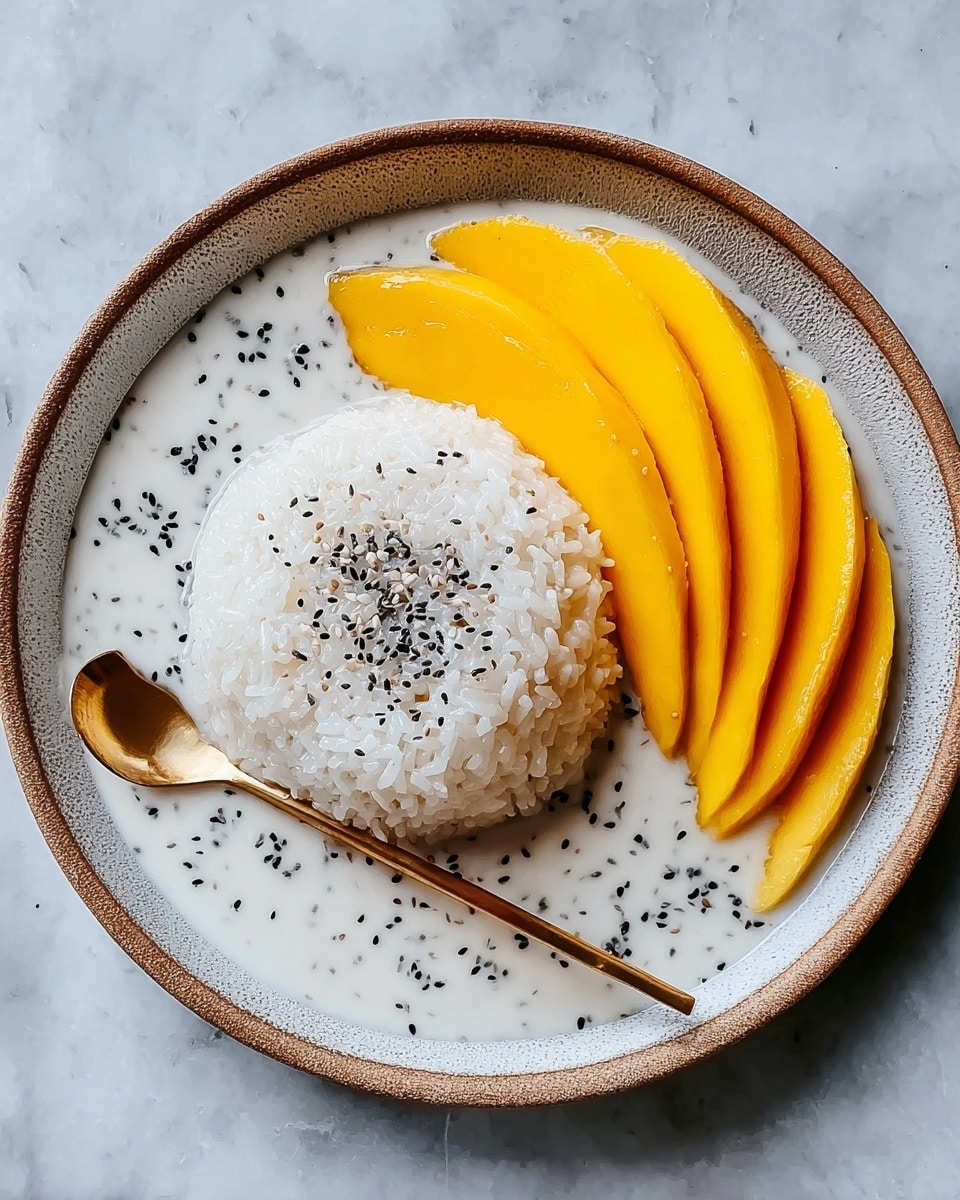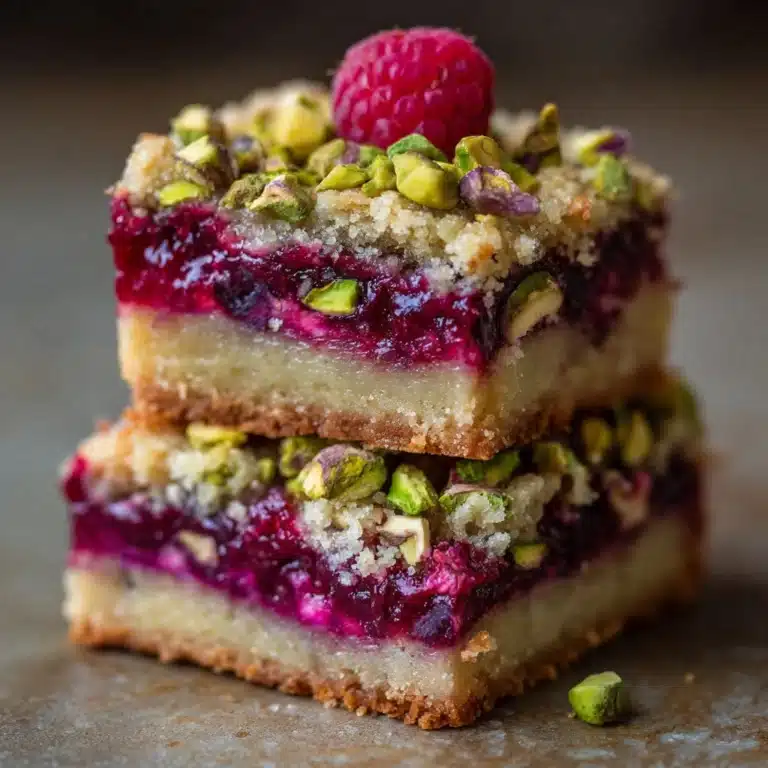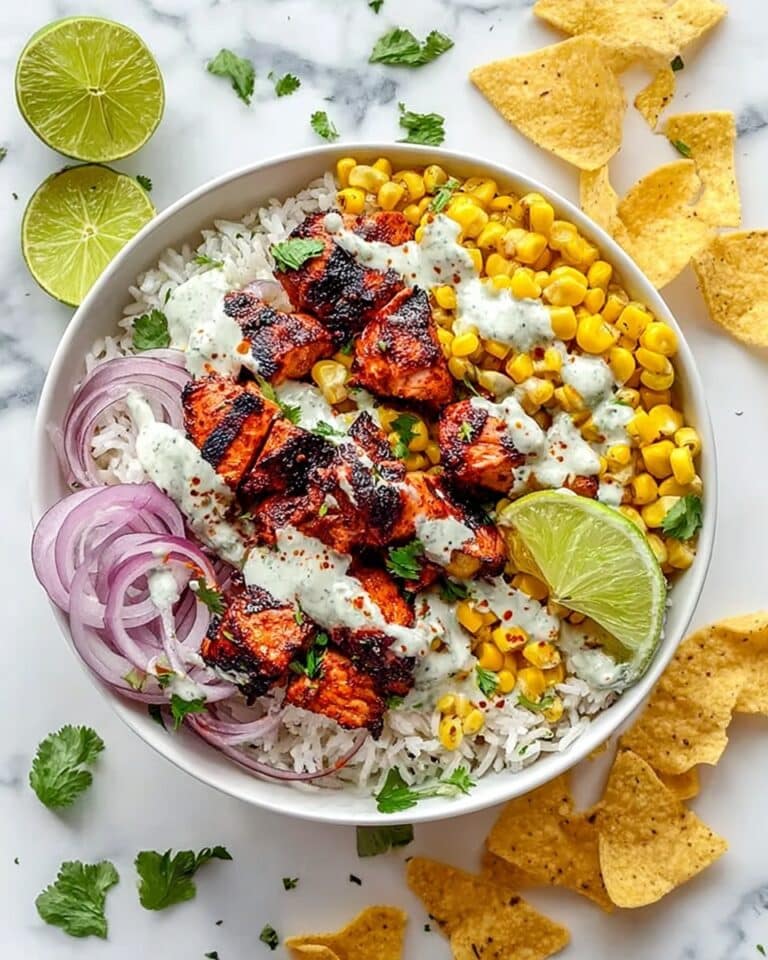If you have a soft spot for tropical flavors and crave a dessert that perfectly balances creaminess with a hint of sweetness, then this Mango Sticky Rice Recipe will become your new favorite indulgence. This iconic Thai dessert combines tender sticky rice soaked in luscious coconut milk with ripe, juicy mango slices, creating a harmony of textures and flavors that is both comforting and exotic. Whether you’re serving it at a dinner party or just treating yourself after a long day, this Mango Sticky Rice Recipe celebrates the vibrant tastes of Southeast Asia with every bite.
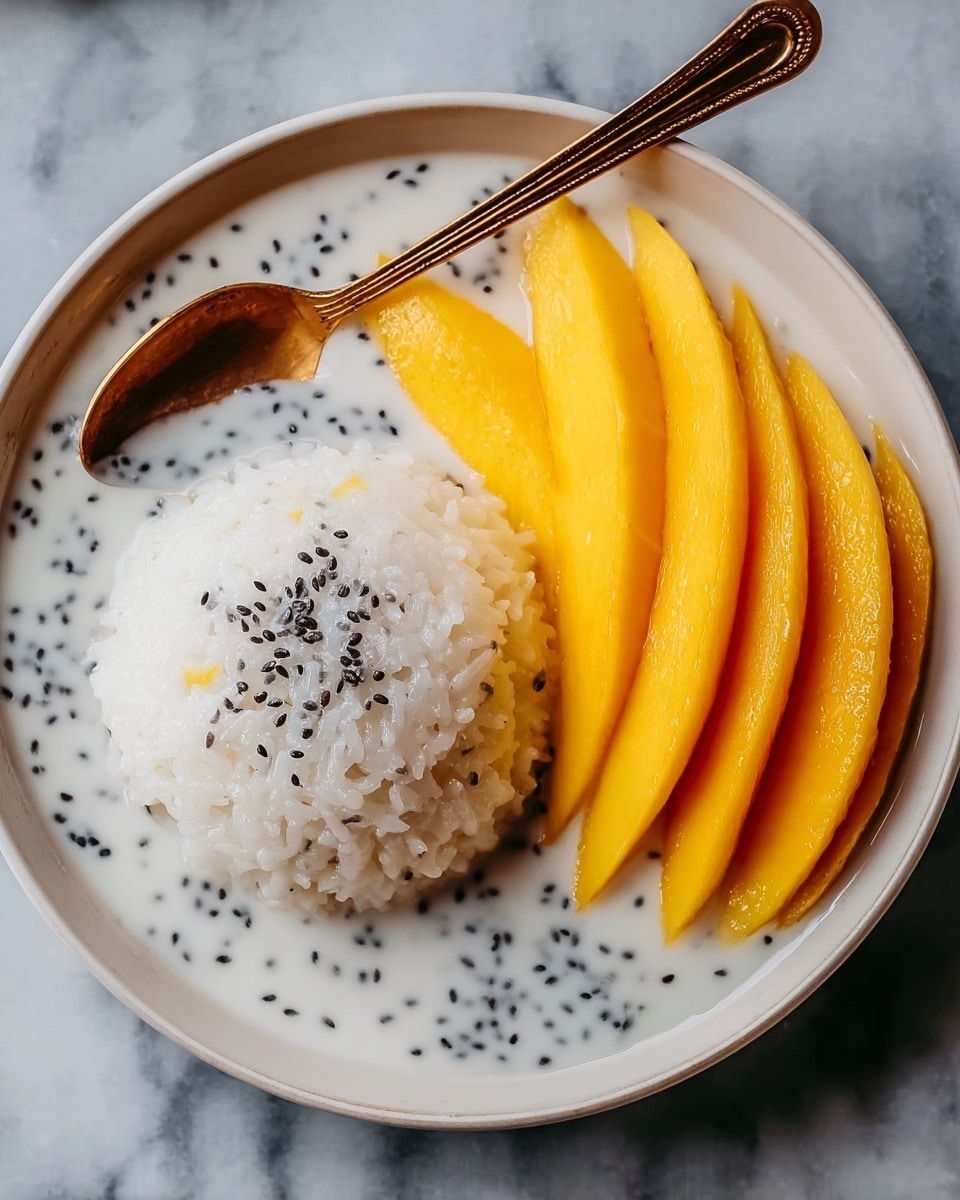
Ingredients You’ll Need
Getting the ingredients right is key to nailing this Mango Sticky Rice Recipe. Each component plays an essential role in achieving that perfect sticky yet creamy texture, bright flavor, and inviting aroma.
- Sticky (glutinous) rice: The foundation of this dish, its unique texture gives the dessert its signature chewiness.
- Full-fat coconut milk: Adds richness and creaminess that complements the rice and mango beautifully.
- Sugar: Balances the natural earthiness of the rice with a gentle sweetness.
- Salt: Enhances all the flavors and prevents the dessert from being overly sweet.
- Cornstarch (optional): Helps thicken the coconut sauce for a luxurious finish.
- Ripe mangoes: Provide a fresh, juicy contrast with their bright, tropical flavor.
- Toasted sesame seeds (optional): Add a subtle nuttiness and an attractive garnish.
How to Make Mango Sticky Rice Recipe
Step 1: Prep and Soak the Sticky Rice
Begin by carefully rinsing the sticky rice under tap water, gently stirring by hand to wash away excess starch. Repeat this process twice for the best texture. Then, soak the rice in cold water for at least one hour—overnight if you have time—allowing it to soften and absorb moisture, which is crucial for achieving that ideal sticky quality.
Step 2: Steam the Rice
Transfer the soaked rice to a heatproof bowl and prepare your steamer with about 2 inches of water, making sure the water doesn’t touch the rice bowl. Place it on the steaming rack and cover. Steam the rice over medium-high heat until the water boils, then reduce to medium and let it cook for 20 to 25 minutes. Your goal is tender, fully cooked rice without any raw bits lingering. Once done, keep it covered off the heat while you prepare the sauce.
Step 3: Prepare the Coconut Sauce
While the rice steams, combine the full-fat coconut milk with sugar and salt in a saucepan. Warm over medium to medium-low heat, stirring occasionally until the sugar dissolves completely. It’s important to keep the heat gentle so the coconut milk doesn’t boil, preserving its creamy, smooth texture.
Step 4: Thicken the Sauce (Optional)
If the sauce feels too runny, create a cornstarch slurry by mixing the cornstarch with water. Add half the slurry to your coconut mixture, stirring constantly to thicken the sauce. Adjust the amount of slurry until the sauce coats the back of a spoon lightly—it should be creamy but not overly thick.
Step 5: Combine Rice and Sauce
Remove the steamed rice bowl carefully from the steamer. Pour about one cup of your luscious coconut sauce over the rice and stir gently to let it absorb all those rich flavors. This step infuses the sticky rice with the signature coconut aroma that defines the Mango Sticky Rice Recipe.
Step 6: Cool and Serve
Allow the coconut-infused sticky rice to cool to room temperature or become just lukewarm. Serve by placing about one-third cup of the rice onto small plates or bowls, arrange the perfectly sliced ripe mango alongside, spoon over any remaining coconut sauce, and finish with a sprinkle of toasted sesame seeds for a delightful texture contrast.
How to Serve Mango Sticky Rice Recipe
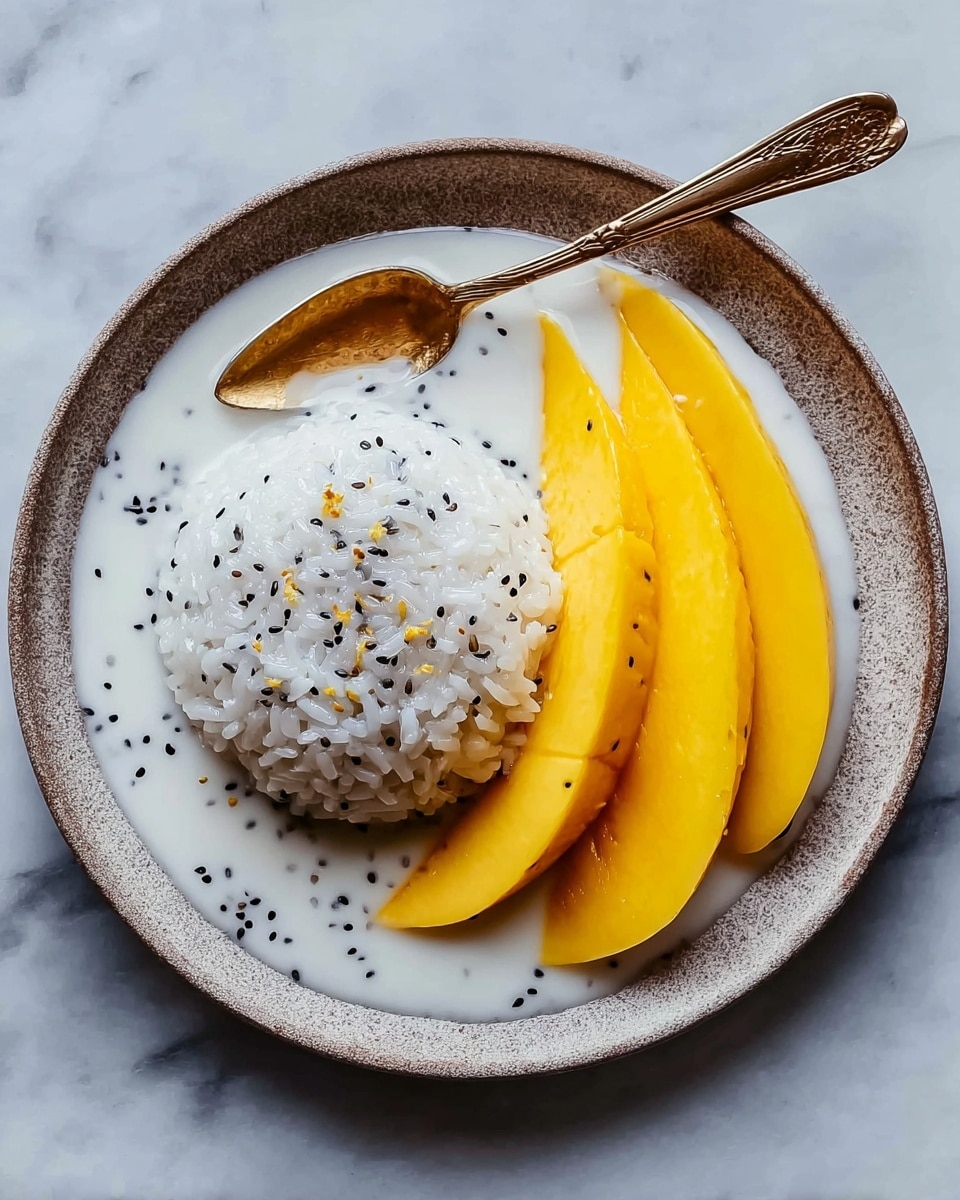
Garnishes
Simple garnishes can elevate your Mango Sticky Rice Recipe beautifully. Toasted sesame seeds are a classic choice, adding nutty crunch while shredded coconut or a few fresh mint leaves can bring brightness and visual appeal. A drizzle of extra coconut sauce right before serving makes everything irresistibly glossy and inviting.
Side Dishes
While Mango Sticky Rice is typically enjoyed on its own as a dessert, it pairs exquisitely with delicate green tea or a refreshing herbal iced tea that balances the sweetness. For a Thai-inspired meal, serve it alongside mild curries or fresh spring rolls to round out the tropical flavor experience.
Creative Ways to Present
Presentation is part of the fun! Try serving your Mango Sticky Rice Recipe in bamboo leaf baskets or mini glass jars to impress guests. You can also mold the sticky rice using small bowls or cookie cutters for charming shapes. For a party twist, spoon rice and mango into edible coconut cups or inside hollowed-out mango halves.
Make Ahead and Storage
Storing Leftovers
If you find yourself with leftover Mango Sticky Rice, store the coconut-infused rice and mango separately in airtight containers in the refrigerator. This helps maintain the mango’s fresh texture and prevents the rice from hardening too quickly.
Freezing
Freezing is not recommended for this dessert as the texture of both rice and mango can become unpleasantly mushy upon thawing. Stick to refrigeration for best results.
Reheating
When you’re ready to enjoy leftovers, gently reheat the sticky rice in the microwave or over low heat with a splash of water to restore its softness. Serve with fresh mango slices to bring back that fruit’s perfect juiciness.
FAQs
Can I use regular rice instead of sticky rice?
Sticky rice’s unique texture is essential for this dessert, so regular rice won’t produce the same chewy, cohesive result. It’s best to use glutinous rice for authentic Mango Sticky Rice Recipe results.
How ripe should the mangoes be?
Choose mangoes that are fully ripe, sweet, and fragrant, but still firm enough to slice neatly without turning mushy. Varieties like Ataulfo or Nam Dok Mai work beautifully.
Is there a vegan version of this dessert?
This recipe is already vegan since it uses coconut milk instead of dairy, so it fits perfectly into plant-based diets without any modifications.
What if my coconut milk is too thin?
If your coconut milk feels watery, use the cornstarch slurry as described to thicken the sauce. This ensures a creamy coating without diluting flavor.
Can I make this recipe gluten-free?
Sticky rice is naturally gluten-free, and the rest of the ingredients are too, so this dessert is safe for gluten-free diets as long as no cross-contamination occurs.
Final Thoughts
Mango Sticky Rice Recipe is truly a dazzling dessert that brings warmth, joy, and a little tropical sunshine to your table. Once you master this recipe, you’ll find it hard to resist its creamy, fruity magic over and over. Grab your sticky rice and juicy mangoes—this is one treat you’re going to want to share with everyone you know!
Print
Mango Sticky Rice Recipe
- Total Time: 40 minutes (plus soaking time)
- Yield: 4 to 6 servings 1x
Description
Mango Sticky Rice is a classic Thai dessert featuring sweet sticky (glutinous) rice steamed to perfection, infused with creamy coconut milk sauce, and served alongside ripe, juicy mango slices. This simple yet indulgent treat balances tropical flavors with a silky texture, making it a beloved dish for warm-weather enjoyment or any time you crave a taste of Southeast Asia.
Ingredients
Sticky Rice
- 1 cup uncooked sticky (glutinous) rice
Coconut Sauce
- 1 can full-fat coconut milk (13.5 oz / 400 g)
- 1/4 cup sugar
- 1/2 teaspoon salt
- 2 teaspoons cornstarch (optional, for thickening)
Fruit & Garnish
- 3 ripe mangoes, peeled and sliced
- Toasted sesame seeds (optional, for garnish)
Instructions
- Rinse and Soak the Rice: Rinse the sticky rice gently under tap water, stirring by hand to remove excess starch. Drain and repeat once more. Then cover the rice with cold water and soak for at least 1 hour, or preferably overnight in the refrigerator. After soaking, rinse and drain again.
- Steam the Rice: Transfer the soaked rice to a heatproof bowl suitable for steaming. Add about 2 inches of water to your steamer, ensuring the water does not touch the rice bowl. Place the bowl on the steaming rack and cover. Bring the water to a boil over medium-high heat, then reduce to medium once steam begins. Steam the rice for 20–25 minutes until fully cooked and no raw grains remain. Keep the rice covered off the heat while you prepare the sauce.
- Prepare Coconut Sauce: In a saucepan, combine the full-fat coconut milk, sugar, and salt. Heat over medium to medium-low heat, stirring continuously until the sugar dissolves and the mixture is hot but not boiling.
- Thicken the Sauce (Optional): If the coconut milk mixture seems too thin, prepare a slurry by mixing cornstarch with 4 tablespoons of water. Add half the slurry to the hot coconut milk while stirring, allowing the sauce to thicken slightly. Adjust by adding more slurry if needed. The sauce should be thick enough to coat the back of a spoon but still pourable.
- Mix Rice with Coconut Sauce: Carefully remove the steamed rice from the steamer. Pour about 1 cup of the coconut sauce over the rice, stirring gently until the sauce is absorbed into the rice, enhancing its flavor and creaminess.
- Serve: Let the coconut sticky rice and sauce cool to room temperature or lukewarm. To serve, spoon approximately 1/3 cup of the coconut rice onto small plates or bowls. Arrange mango slices on the side, drizzle additional coconut sauce on top, and garnish with toasted sesame seeds if desired.
Notes
- Soaking the rice overnight improves texture and ensures even cooking.
- Do not let the coconut milk mixture boil, as it can separate or curdle.
- Adjust the sweetness of the coconut sauce based on your preference or mango ripeness.
- The optional cornstarch slurry is useful if your coconut milk is too watery to coat the rice properly.
- For extra flavor, some people like to add a pandan leaf while steaming the rice.
- Use ripe mangoes for the best balance of sweetness and acidity.
- Toast the sesame seeds lightly to enhance their nutty flavor.
- Prep Time: 10 minutes
- Cook Time: 30 minutes
- Category: Dessert
- Method: Steaming
- Cuisine: Thai
